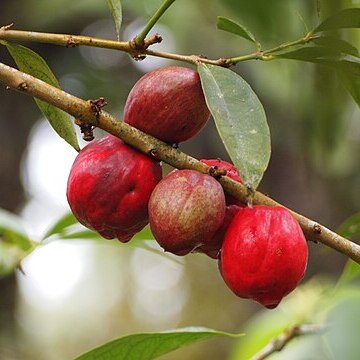Shrub or small tree, up to 18 m by 15 cm. Young branches hollow. Leaves chartaceous to subcoriaceous, glabrous, ovate-oblong, elliptic-oblong, lanceolate, oblong-lanceolate, 10-25 by 3-10 cm; base cuneate or rounded; apex shortly acute to acuminate, acumen up to 2 cm; nerves 6-11 pairs, spreading towards the margins, sometimes their distal end curving upwards and united loop-like, elevated and distinct on both surfaces; veins loosely reticulate, sometimes subperpendicular to the midrib, slightly elevated on both surfaces. Inflorescences terminal and in the axils along the branchlets, sometimes cauliflorous, 1 to 5, rarely more peduncles in each axil; peduncles 0 or up to 2.5 cm (cf bb 25746), each 2-5(-8)-flowered; involucral bracts 4, small, obovate, oblong, caducous, 7 by 2 mm. Flowers 1.5-4 cm long. Floral tube glabrous on both surfaces, sometimes puberulous and hairy on the inside towards the base. Calyx lobes oblong, 4 by 2 mm, reflexed, densely puberulous inside and on the margins outside. Stamens sessile or up to 6 mm exserted. Ovary glabrous; style shorter than or as long as the tube or c. 5-10 mm exserted. Fruits subglobose to broadly ellipsoid or rounded, sometimes slightly obovate and stipe-like narrowed towards the base, 3-5.5 by 3-4.5 cm, exocarp woody when dry. Seed subglobose or slightly ovate, c. 1.5 by 1.25 cm.
More
A small tree. It grows 6-18 m tall. The young branches are hollow. The leaves are narrowly oval and 10-25 cm long by 3-10 cm wide. They are smooth, opposite and papery. There are 6-11 pairs of veins. The flowering shoots are at the ends of branches and in the axils of leaves or on the trunks. There can be 2-8 flowers in a group. The flowers are 2-4 cm long. The fruit is about 3-5 cm long by 3-4 cm across and oval. The fruit are green and turn red when ripe. The seeds are 1.5 cm long by 1.3 cm wide.

